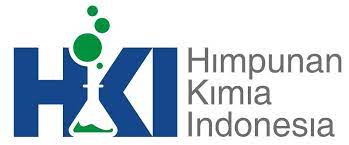
Physical test and irritation test of water guava leaf extract (Syzygium aqueum) as a natural spray hand sanitizer
Authors
Sri Winarni Sofya , Lalu Busyairi MuhsinDOI:
10.29303/aca.v7i2.212Published:
2024-10-31Issue:
Vol. 7 No. 2 (2024)Keywords:
Syzygium aqueum, extract, handsanitizer, flavonoids, iritationArticles
Downloads
How to Cite
Downloads
Metrics
Abstract
This study explores the manufacture of water guava (Syzygium aqueum) leaf extract-based hand sanitizers as an effective and safe natural alternative for maintaining hand hygiene. Given the importance of hand hygiene in preventing the spread of disease, especially amid the COVID-19 pandemic, the use of hand sanitizers has increased significantly. However, alcohol-based products are often irritating to the skin. Therefore, this study aims to evaluate the potential of water guava leaf extract to improve the effectiveness and convenience of hand sanitizers. Water guava leaves contain active compounds such as flavonoids, tannins, and phenolics with antibacterial and anti-inflammatory properties. The research method includes extracting water guava leaves, hand sanitizer formulation, and organoleptic, pH, homogeneity, and irritation testing. The tests carried out were physical tests, including organoleptic tests (shape, smell, and colour), pH, homogeneity, spreadability, adhesiveness, and product irritation tests. The research was designed with a posttest-only control group design with true experimental by analyzing the test object after being given treatment. This research is expected to produce products that are useful for the community. The results showed that all hand sanitizer formulas tested had a pH within the safe range of pH 5 for the skin without irritating the skin of the test animals. Formulas with added guava extract showed improved aroma and anti-irritation, with formulas F1 and F2 gaining the highest preference in aroma and colour. This study concludes that water guava leaf extract can be effectively used in the manufacture of hand sanitizers, providing a gentler and skin-friendly alternative to alcohol-based synthetic products.
References
Chang HJ, Kim YH, Kang YH, Choi MH, Lee JH. Antioxidant and antibacterial effects of medicinal plants and their stick-type medicinal concentrated beverages. Food Science and Biotechnology. 2020 Oct;29:1413-23.
Oakenfull D, Sidhu GS. Could saponins be a useful treatment for hypercholesterolaemia. European journal of clinical nutrition. 1990;44(1):79-88.
Leekha S, Terrell CL, Edson RS. General principles of antimicrobial therapy. In Mayo clinic proceedings 2011 Feb 1 (Vol. 86, No. 2, pp. 156-167). Elsevier.
Fenical W. Chemical studies of marine bacteria: developing a new resource. Chemical Reviews. 1993 Jul 1;93(5):1673-83.
Magani AK, Tallei TE, Kolondam BJ. Uji Antibakteri Nanopartikel Kitosan terhadap Pertumbuhan Bakteri Staphylococcus aureus dan Escherichia coli. Jurnal Bios Logos. 2020 Jan 25;10(1):7-12.
Mulqie L, Suwendar S, Choesrina R, Mardliyani D. potensi antibakteri fraksi air daun jambu air [eugenia aqueum (burm. f) alston] terhadap staphylococcus aureus dan escherichia coli. Jurnal Ilmiah Farmasi Farmasyifa. 2021 Jan 30;4(1):98-104.
Agustina E, Andiarna F, Lusiana N, Purnamasari R, Hadi MI. Identifikasi senyawa aktif dari ekstrak daun jambu air (Syzygium aqueum) dengan perbandingan beberapa pelarut pada metode maserasi. Biotropic: The Journal of Tropical Biology. 2018 Aug 31;2(2):108-18.
Insanu M, Mutia C, Artarini AA. Pengujian Toksisitas In Vitro Ekstrak dan Fraksi Dari Daun Jambu Air (Syzygium aqueum) dan Kulit Buah Delima (Punica Granatum) Terhadap Sel Vero. Acta Pharmaceutica Indonesia. 2017;42:76-83.
Mubarokah MA. Uji Kestabilan Zat Warna Ekstrak Daun Jambu Air Deli Hijau (Syzygium Samarangense (Blume) Merr. & Perry) Terhadap Lama Ekstraksi Dan Ph. Science Tech: Jurnal Ilmu Pengetahuan dan Teknologi. 2019 Jul 23;5(1):23-9.
Zaen DM, Ekayanti M. Penetapan Flavonoid Total Dan Uji Aktivitas Antioksidan Ekstrak Etanol Dari Daun Jambu Air (Syzygium aqueum), Daun Jambu Bol (Syzygium malaccense) Dan Daun Jamblang (Syzygium cumini). Jurnal Kedokteran Universitas Palangka Raya. 2022 Oct 10;10(2):15-8.
Albab U, Nirwana RR, Firmansyah RA. Aktivitas Daun Jambu Air (Syzygium Samarangense (BL.) Merr Et. Perry) serta Optimasi Suhu dan Lama Penyeduhan. Walisongo Journal of Chemistry. 2018 Jun 2;1(1):18-30.
Djima EG, Prasetyaningsih A, Madyaningrana K. Antibacterial activity of lime peel and lemongrass extract as active ingredients for spray hand sanitizer. SCISCITATIO. 2021 Mar 29;2(1):22-8.
Sinurat JP, Karo Rm. Training On Making Hand Sanitizer Based On Bay Leaf Extract (Syzygium Polyanthum). Jurnal Pengmas Kestra (Jpk). 2022 Jun 30;2(1):98-102. Trisnayanti NK, Dewantara IG, Prasetia IG. Uji iritasi gelling agent semi sintetik HPMC pada kelinci. Skripsi Fakultas Matematika dan Ilmu Pengetahuan Alam Universitas Udayana. 2015.
Kandárová H, Hayden P, Klausner M, Kubilus J, Kearney P, Sheasgreen J. In vitro skin irritation testing: improving the sensitivity of the EpiDerm skin irritation test protocol. Alternatives to Laboratory Animals. 2009 Dec;37(6):671-89.
Bos PM, Zwart A, Reuzel PG, Bragt PC. Evaluation of the sensory irritation test for the assessment of occupational health risk. Critical reviews in toxicology. 1992 Jan 1;21(6):423-50.
El Jannah SM, Zuraida Z, Yulfianna D, Aditia E. Comparison of the number of bacterial colonies before and after using hand sanitizer from acacia nilotica leaf extract. Jurnal Farmasi Galenika (Galenika Journal of Pharmacy)(e-Journal). 2021 Dec 7;7(3):251-9.
Margaretha EV, Juliantoni Y, Wirasisya DG. Antibacterial Activities from Gel Hand Sanitizer of Jatropha curcas Leaves Ethanolic Extract Against Staphylococcus aures ATCC 25923. Sasambo Journal of Pharmacy. 2020 Apr 30;1(1):6-11.
Restuati M, Brata WW, Pratiwi N. Processing Technology Of Buas-Buas Leaves (Premna Pubescens Blume) Into Liquid Soap And Hand Sanitizer Tested Organoleptic And Anti-Bacterial. Russian Law Journal. 2023;11(6s):319-31.
Yanti S, Futri CL. Literature Study of Formulating and Testing Physical Properties of Hand Sanitizer Preparations of Various Plant Extracts. Journal of Public Health and Pharmacy. 2022 Mar 25;2(1):15-9.
Waen-Ngoen T, Wunnoo S, Nwabor OF, Bilhman S, Dumjun K, Ongarj J, Pinpathomrat N, Lethongkam S, Voravuthikunchai SP, Paosen S. Effectiveness of plant-based hand sanitizer incorporating Quercus infectoria gall extract. Journal of Applied Microbiology. 2023 Dec;134(12):lxad295.
Berghuis NT, Setiawan KD, Maratu A, Pusfianty P, Amanda T, Janah R, Sari R. Bio-Hand Sanitizer Based on Peel of Lime (Citrus aurantifolia S) and Leaves Betel (Piper betle L). Chimica et Natura Acta. 2023 Apr 15;11(1):14-21.
Futri CL, Yaturramadhan H. Formulation of gel handsanitizer ethanol extract salam leaves with carbopol and Na CMC as gelling agent. Journal of Public Health and Pharmacy. 2022 Mar 25;2(1):10-4.
Farid N, Awaluddin N, Hamzah S, Yusuf M, Rahmania R. Formulation And Antibacterial Activity Test Of Hand Sanitizer Ethanol Extract Of Basil (Ocimum Sanctum. L) Against Escherichia Coli Dan Streptococcus Aureus. Media Kesehatan Politeknik Kesehatan Makassar. 2020 Dec 26;15(2):228-37.
De Oliveira AM, da Silva Férnandes M, de Abreu Filho BA, Gomes RG, Bergamasco R. Inhibition and removal of staphylococcal biofilms using Moringa oleifera Lam. aqueous and saline extracts. Journal of Environmental Chemical Engineering. 2018 Apr 1;6(2):2011-6.
License
Copyright (c) 2024 Sri Winarni Sofya, Lalu Busyairi Muhsin

This work is licensed under a Creative Commons Attribution-NonCommercial-ShareAlike 4.0 International License.
Authors who publish with ACA: Acta Chimica Asiana agree to the following terms:
- Authors retain copyright and grant the journal right of first publication with the work simultaneously licensed under a Creative Commons Attribution-NonCommercial-ShareAlike 4.0 International License. This license allows authors to use all articles, data sets, graphics, and appendices in data mining applications, search engines, web sites, blogs, and other platforms by providing an appropriate reference. The journal allows the author(s) to hold the copyright without restrictions and will retain publishing rights without restrictions.
- Authors are able to enter into separate, additional contractual arrangements for the non-exclusive distribution of the journal's published version of the work (e.g., post it to an institutional repository or publish it in a book), with an acknowledgement of its initial publication in ACA: Acta Chimica Asiana.
- Authors are permitted and encouraged to post their work online (e.g., in institutional repositories or on their website) prior to and during the submission process, as it can lead to productive exchanges, as well as earlier and greater citation of published work (See The Effect of Open Access).





 Indonesian Chemical Society, Chapter Nusa Tenggara. Jalan Majapahit 62 Mataram, University of Mataram, 83125, Indonesia
Indonesian Chemical Society, Chapter Nusa Tenggara. Jalan Majapahit 62 Mataram, University of Mataram, 83125, Indonesia





